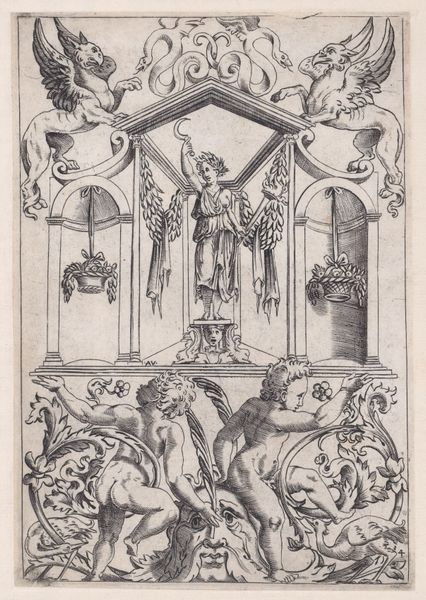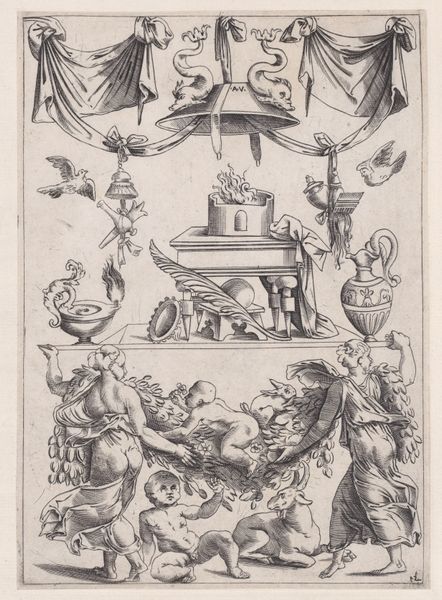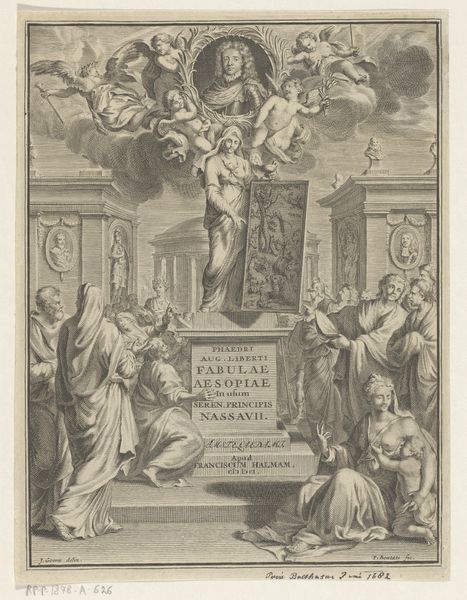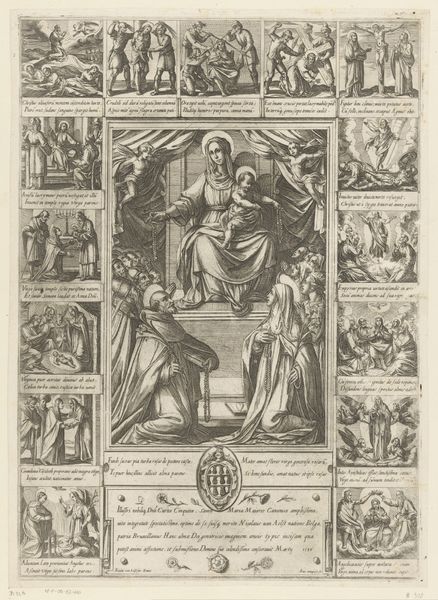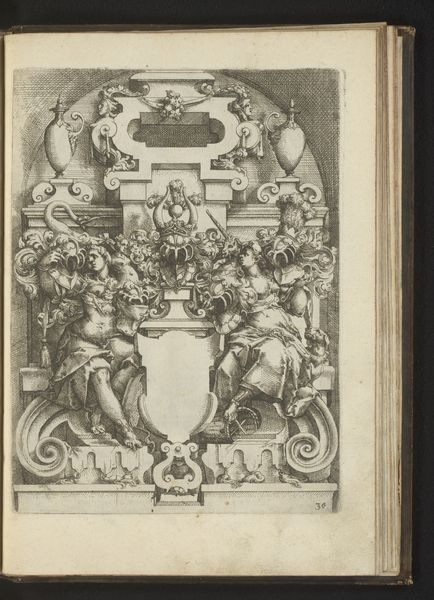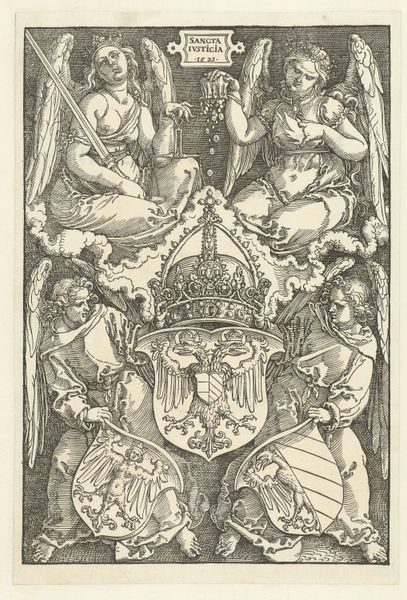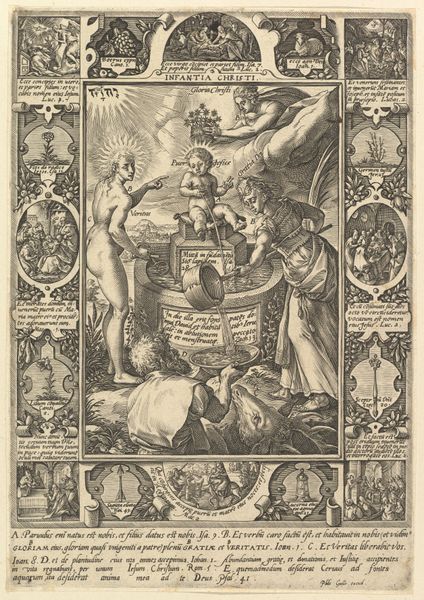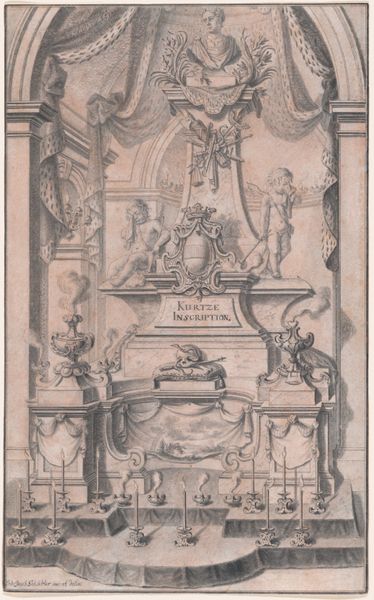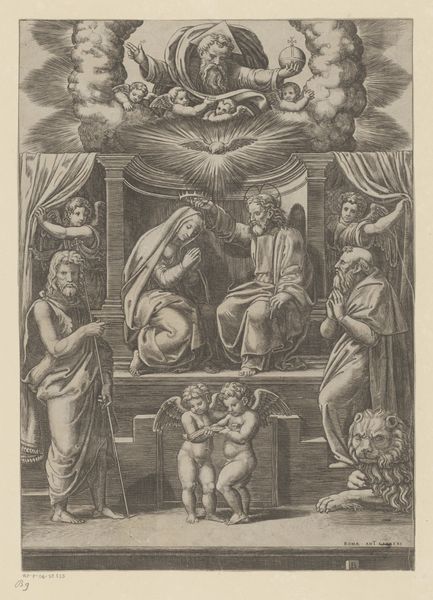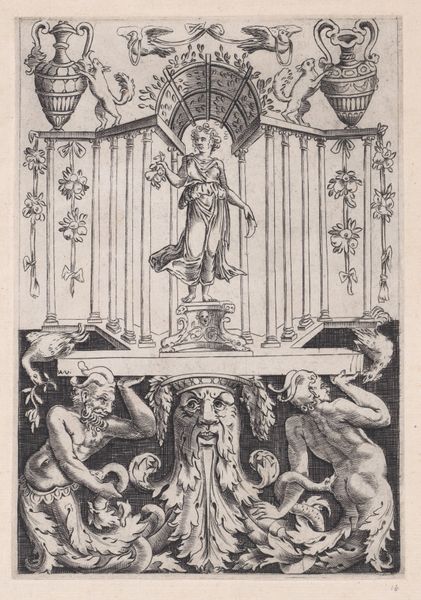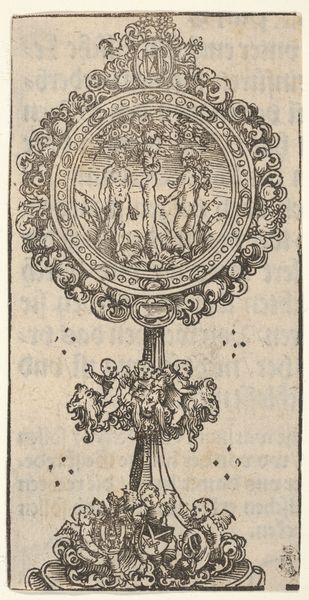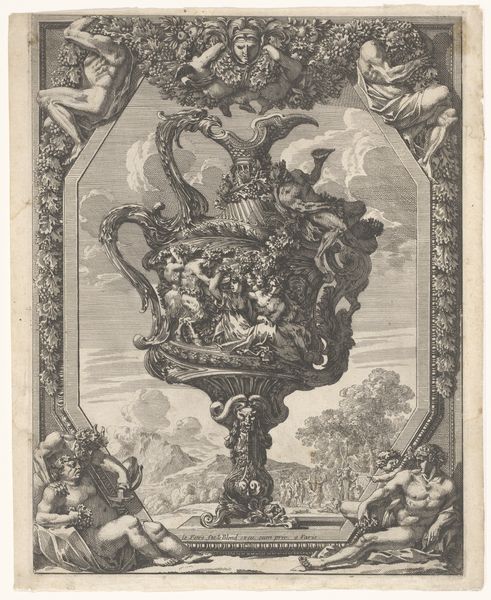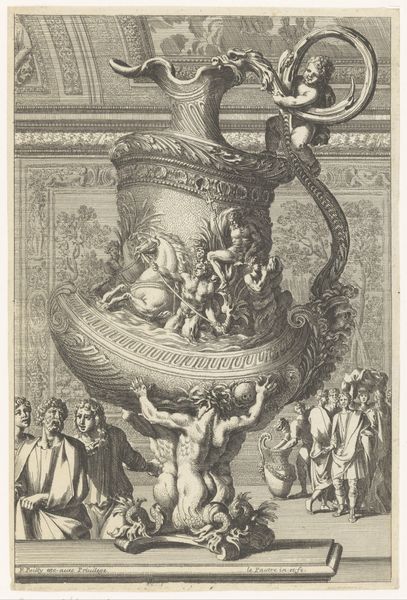
The Triumph of the Eucharist, Christ as the Man of Sorrows supported by two angels standing in a chalice 1545 - 1555
0:00
0:00
drawing, print, engraving
#
drawing
#
narrative-art
# print
#
figuration
#
history-painting
#
italian-renaissance
#
engraving
#
angel
#
christ
Dimensions: Sheet: 10 1/2 × 6 15/16 in. (26.6 × 17.7 cm)
Copyright: Public Domain
Editor: So, this is an engraving called "The Triumph of the Eucharist, Christ as the Man of Sorrows supported by two angels standing in a chalice." It's by an anonymous artist, dating from around 1545 to 1555. The stark black and white gives it such a dramatic, almost confrontational feel. What stands out to you most about this work? Curator: What immediately grabs my attention is the sociopolitical context of this imagery during the mid-16th century. Consider the Counter-Reformation: the Council of Trent was underway during this time. Images like these affirmed the Catholic Church's doctrines against the burgeoning Protestant Reformation. How do you think this image functioned as propaganda? Editor: I guess showing Christ in the Eucharist, literally in the chalice, would visually reinforce the importance of the sacrament and transubstantiation, something Protestants were questioning. But who was the audience for something like this? Curator: Exactly. Its didactic nature was geared towards the faithful, of course, but it also acted as a symbolic boundary-marker, differentiating “us” from “them.” Moreover, how does the portrayal of Christ here – suffering, yet triumphant – resonate with contemporary understandings of power, victimhood, and the narratives we construct around these figures? Editor: That's a really interesting question. It's almost like the image is both glorifying and emphasizing Christ's suffering at the same time, maybe as a way to inspire devotion through guilt? I hadn't really thought about the power dynamics embedded in the image like that. Curator: And isn't that ambiguity itself a testament to art's power to negotiate complex ideologies? We need to recognize how art, even religious art, becomes a stage for ideological debates about identity and belonging. Editor: I agree. Looking at it through that lens really changes how I see it. Thanks for pointing that out! Curator: It's crucial to approach art with this kind of critical eye, to understand the narratives they perpetuate. Now consider how different audiences through history may interpret this artwork!
Comments
No comments
Be the first to comment and join the conversation on the ultimate creative platform.
